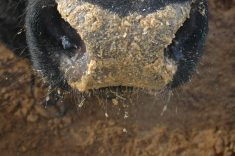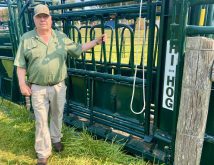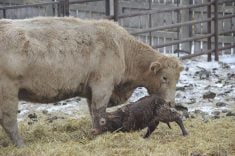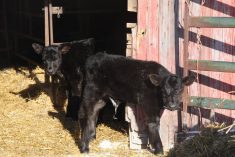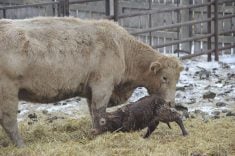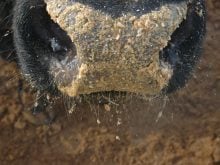The bulls have finished their work by this time of year, and once removed from the cow herd they run the risk of being neglected until they are needed again.
That’s a mistake because bulls are an investment for the role they play in future production and profitability.
“One of the things that we tend to see, and you see it across Alberta and Saskatchewan, is that … when the breeding season is over they’re kind of placed aside. They’re difficult to handle, often they’re put together with a group of bulls,” said Dr. Colin Palmer, associate professor in large animal clinical sciences at the University of Saskatchewan’s Western College of Veterinary Medicine.
Read Also

Using artificial intelligence in agriculture starts with the right data
Good data is critical as the agriculture sector increasingly adopts new AI technology to drive efficiency, sustainability and trust across all levels of the value chain.
“That concerns me a bit because bulls can’t be forgotten about in the off season. They still need to have the same mineral program that you would continue through the year with.”
Palmer said it’s important to ensure that bulls receive the necessary minerals, both micro and macro, to maintain their health over winter. Sufficient calcium, phosphorus and magnesium, as well as good energy and protein levels in feed, are a must. Trace minerals, including zinc and copper, which are deficient in many regions of the Prairies, must also figure into nutrient supplies.
Winter naturally brings temperature challenges for bulls as well. Palmer said in his experience with research involving community pastures, he sometimes sees a high percentage of bulls fail their breeding soundness evaluations.
“There was a tendency that those bulls were wintered in what we call rough situations, very much like out on the open prairie,” he said.
Bulls that must walk long distances to water in winter run a higher risk of freezing their scrotums. Scrotal frostbite lesions can also result if sufficient bedding isn’t provided for all bulls in the group.
Bulls establish a pecking order, and dominant animals can prevent others from using bedded areas if bedding is insufficient. Similarly, if supplemental feed is provided, producers need to make sure dominant bulls aren’t preventing others from getting enough feed.
“(It’s a case of) producers kind of paying attention to what you’re feeding,” Palmer said.
“Is it really what you’re feeding? Is it available to each and every one of those bulls? Can they get it? Do you think that those bulls are consuming enough per head, or is there one bull that’s getting twice as much feed and the other ones are taking a lesser amount?”
To avoid too much fighting among bulls, Palmer recommended moving all bulls to a new pen when adding any animals to the mix. That avoids the territoriality that might have developed.
“Whenever I can, if I need to add a bull to a group, I add the bull into a new pen and I bring his cohorts in and that seems to distribute some of the fighting and the scrapping that goes on,” Palmer said.
“So that’s one trick, and I’ve had many producers agree with that as a good idea.”
Palmer has come across anecdotal information about the best number of bulls to include in a pasture. If a large number are involved, such as bulls for community pastures, 30 is the maximum.
Pasture managers have suggested that bulls’ ability to recognize other animals is limited to about that number. More than that and they feel the need to fight with animals they see as newcomers.
“Seems like the bull’s mental capacity was to know 29 other colleagues,” Palmer said, noting he thought it was funny when he heard it the first time but the concept has been borne out according to pasture managers.
Bulls should go into the breeding season with a body condition score of three or four on a five-point scale. Sufficient care over winter is needed for them to achieve that, said Palmer.
“One of the lines that I like is, I say, ‘the bull should have the physique of a well-conditioned athlete, like a football player or a hockey player that’s ready to go, so he’s been working out, training.’
“When I use that term around producers or use it in literature, people seem to really get that, to think about that bull as an athlete. He is expected to perform and do his breeding job over a 60-day period. Sometimes shorter, and many times a little bit longer than that, but still, out of a whole year that’s a pretty tight period of time.”




